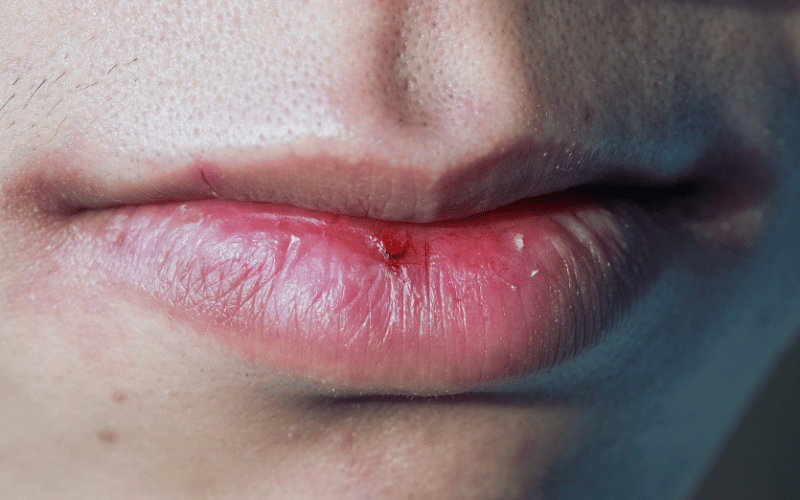Symptom 7: Loss of Vermilion Border

The vermilion border is that sharp, well-defined boundary separating the reddish-pink part of the lips from the facial skin. When actinic cheilitis takes hold, one alarming sign is the fading or loss of this border. It’s like watching the shores of a once-familiar beach erode over time; the lines blur, the distinctions wane.
The primary driver behind this loss is the continuous, unchecked exposure to harmful UV rays. Over time, the sun’s radiation damages the delicate skin of the lips, causing this boundary to become less distinct. Other factors, such as age, genetics, and tobacco use, can compound this effect, accelerating the loss and blurring the lip’s natural boundary even further.
Beyond the evident visual change, the loss of the vermilion border impacts the lips’ overall health. This fading signifies that the skin on and around the lips is weakening. It becomes thinner, more fragile, and more susceptible to external irritants and damage. As this barrier deteriorates, the lips can become more prone to dryness, cracking, and other symptoms.
Our lips are often central to our facial aesthetics, playing a pivotal role in our expressions and appearance. The blurring or loss of the vermilion border can cause distress for many, making them feel self-conscious or less confident in social scenarios. This can impact interpersonal interactions, with individuals feeling more reserved or wary of drawing attention to themselves.
The loss of the vermilion border isn’t just a cosmetic concern. It’s a glaring red flag, signaling the underlying damage caused by actinic cheilitis. Understanding this symptom’s implications can aid in seeking timely treatment, preventing further deterioration, and restoring lip health. (7)